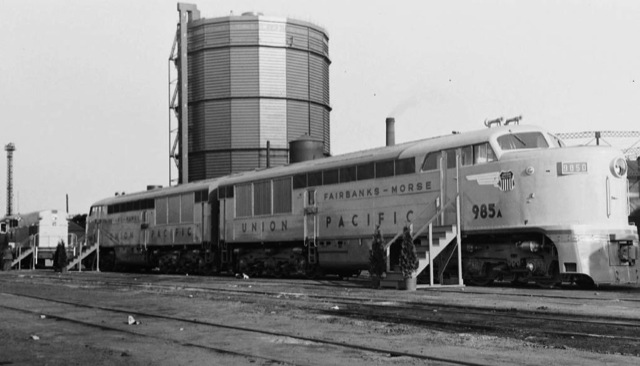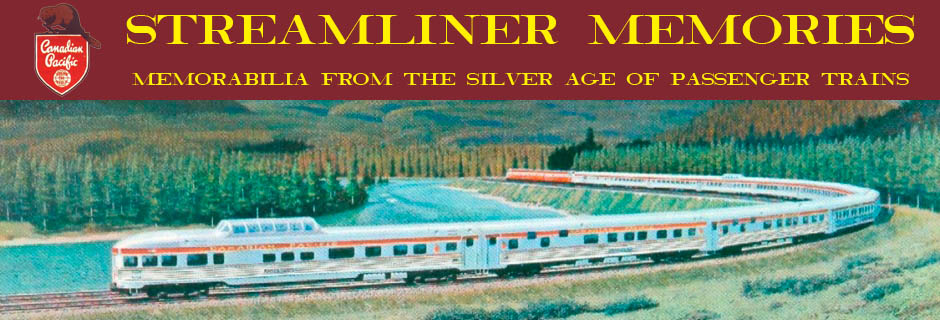This cheerful letterhead for Portland’s freight department features General Motors E units pulling a domeliner and Fairbanks-Morse Erie-built Diesels pulling a freight. UP acquired the Erie-built locomotives for passenger service between 1945 and 1948, but didn’t start running them in the Northwest until 1953, where they lasted in freight and passenger service until 1961. So this letterhead dates from sometime between 1955 (when the City of Portland become a domeliner) and 1961, but probably the earlier part of that period as they wouldn’t want to publicize a locomotive that was about to be scrapped.

Click image to download a PDF of this letterhead.
As noted here some time ago, Fairbanks-Morse Diesel locomotives were unusual in using opposed pistons, which meant that each cylinder drove two pistons, making a 10-cylinder engine more than twice as powerful as an ordinary 16-cylinder engine. Often used in submarines and other boats, the U.S. Navy considered these Diesels more reliable than ones built by General Motors, but the railroads ended up happier with GM locomotives. FM built just 111 Erie-builts, while GM sold more than 500 E7s. Though designed by Raymond Loewy, all known Erie-built locomotives have been sadly scrapped.

Fairbanks-Morse publicity photo of an Erie-built locomotive, probably taken in 1947. The locomotive at the extreme left is an H-15-44 road switcher, FM’s answer to General Motors’ BL-2. While GM only built 59 BL-2s compared with FM’s 35 H-15-44s, GM followed the BL-2 with more than 6,800 GP-7s and GP-9s, while FM built less than 300 H-16-44 and H-20-44 locomotives, the successors to the H-15-44.
